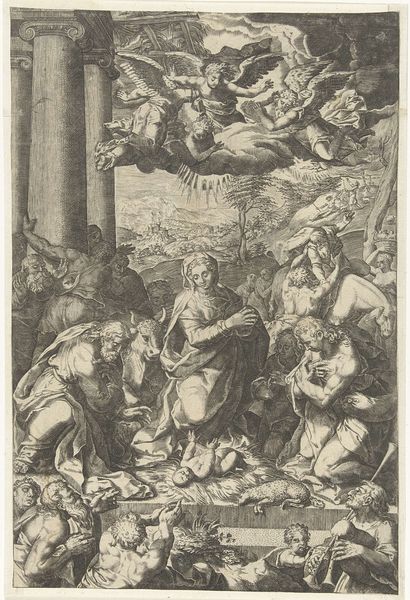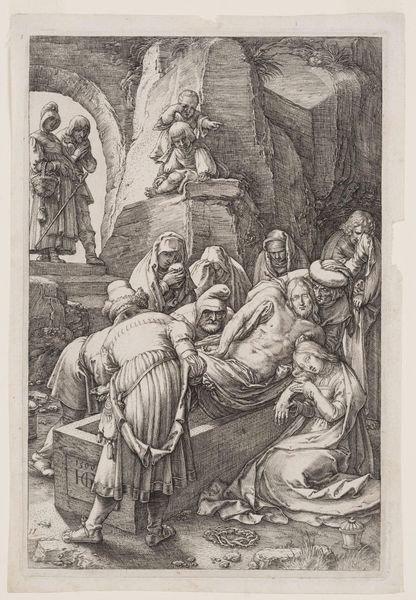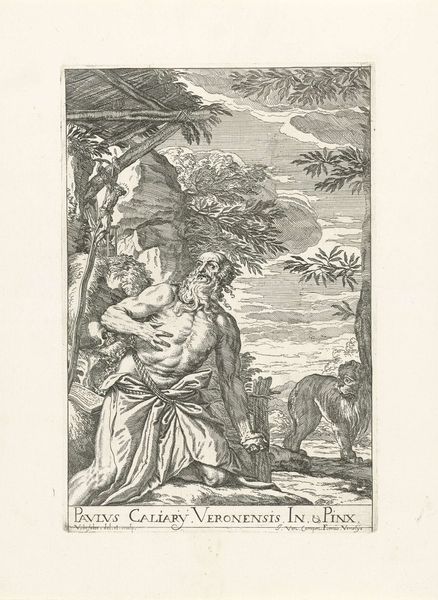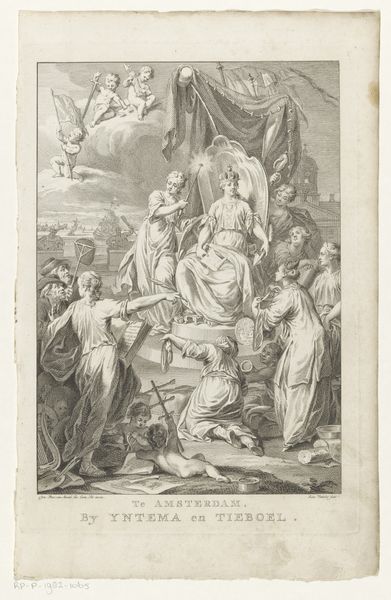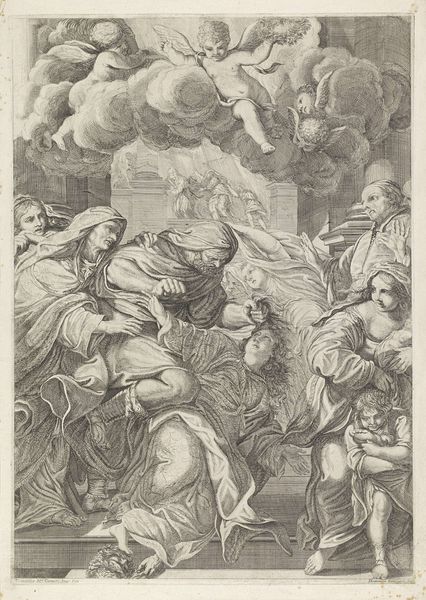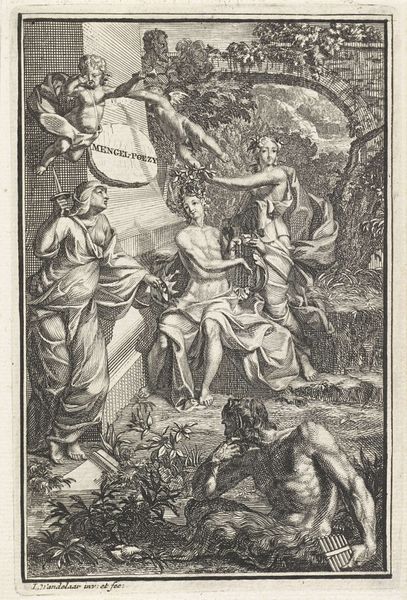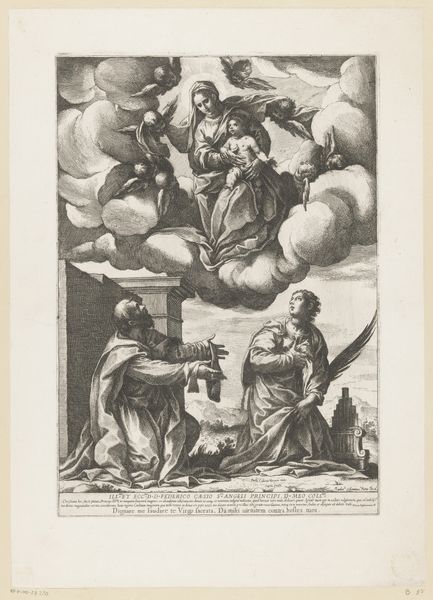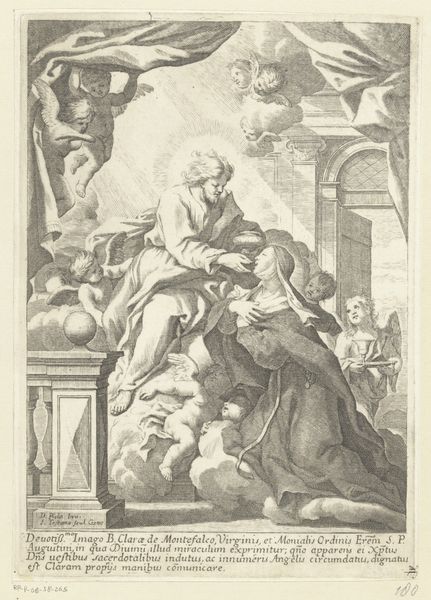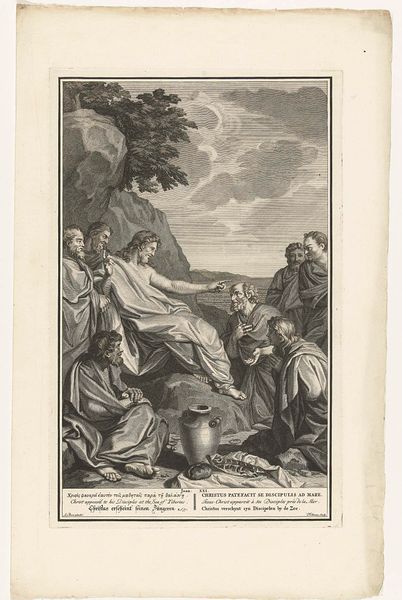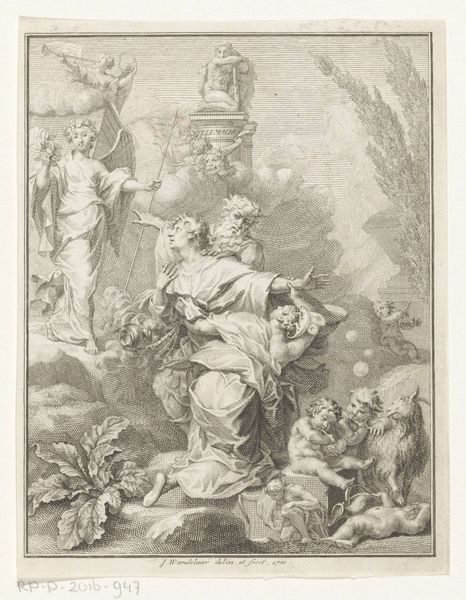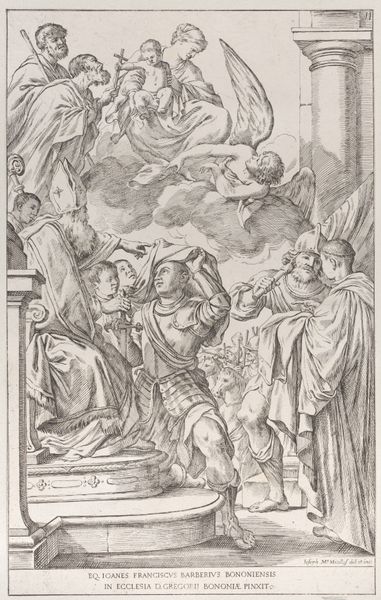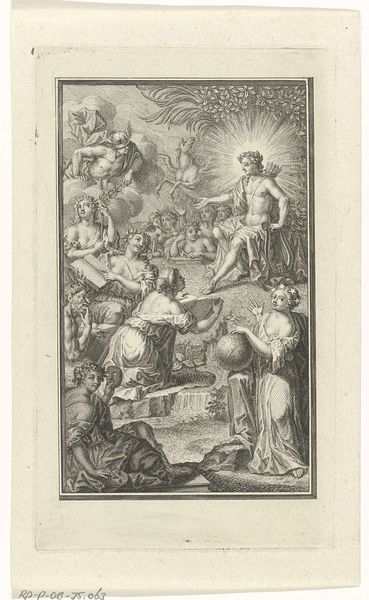
print, engraving
#
baroque
# print
#
old engraving style
#
landscape
#
figuration
#
mythology
#
history-painting
#
engraving
Dimensions: height 304 mm, width 208 mm
Copyright: Rijks Museum: Open Domain
Curator: It has an almost dreamlike quality. Editor: Indeed. What we're looking at here is an engraving made sometime between 1640 and 1646 by Cornelis Bloemaert, now held in the Rijksmuseum collection. It’s titled "Tirsenia verandert in een citroenboom" – "Tirsenia Changes into a Lemon Tree." Curator: A rather abrupt title, I find, though I sense the story’s tension in Tirsenia’s expression. She looks caught between terror and transformation, the leafy headdress suggesting her metamorphosis has already begun. The faces around her are compelling: distress, morbid curiosity, even a kind of fascinated horror. It's like looking into the depths of their minds as they process this impossible event. Editor: Bloemaert really captured the Baroque taste for the dramatic and emotional. Transformation myths were potent cultural material for centuries, serving as allegories of change, punishment, and the relationship between humans and the divine. What fascinates me is how these myths got a second life during times of social, political and institutional instability. This was the time when the States-General of the Netherlands were consolidating their powers. The representation of ancient powers being violently overwritten was a way for the contemporary audience to process their present. Curator: Yes! The setting too seems pregnant with meaning: notice the statue, a classical figure intertwined with a serpent – symbols of knowledge and power, now overseeing a scene of bewildering transformation. Consider the cascading water from the figure below, it may represent a kind of purification or the ever flowing current of nature, irrevocably altering everything in its path. Editor: The placement of these figures adds to the drama. The engraving feels dynamic because we, as viewers, enter this circle of gazes, these emotional perspectives on myth being reborn into an unstable world. Curator: It’s fascinating how these symbols converge in a moment of personal and cosmic shift. We're compelled to contemplate our place in the unfolding story, asking: what can possibly withstand transformation? Editor: Right, and what is our public responsibility towards monumental change and how do we represent these events and these figures within this ever shifting cultural-political landscape. The past always serves the present, and it's something this image renders clear. Curator: I find it intriguing to witness the continued reverberations of this singular event, to contemplate its echoes in the human psyche. Editor: The legacy lives through these images that continue to reshape how we understand who we were, are, and could become as societies and individuals.
Comments
No comments
Be the first to comment and join the conversation on the ultimate creative platform.

